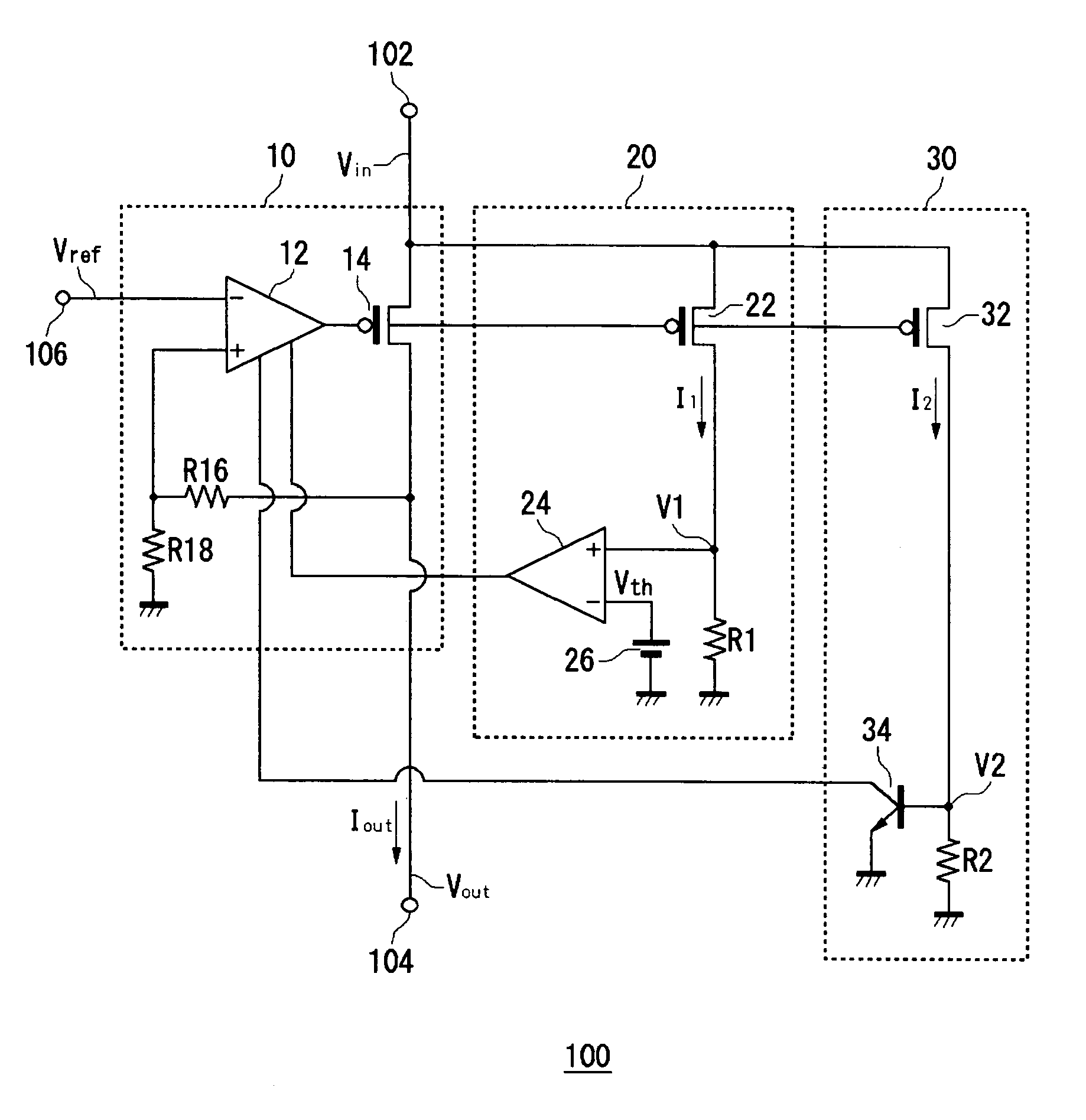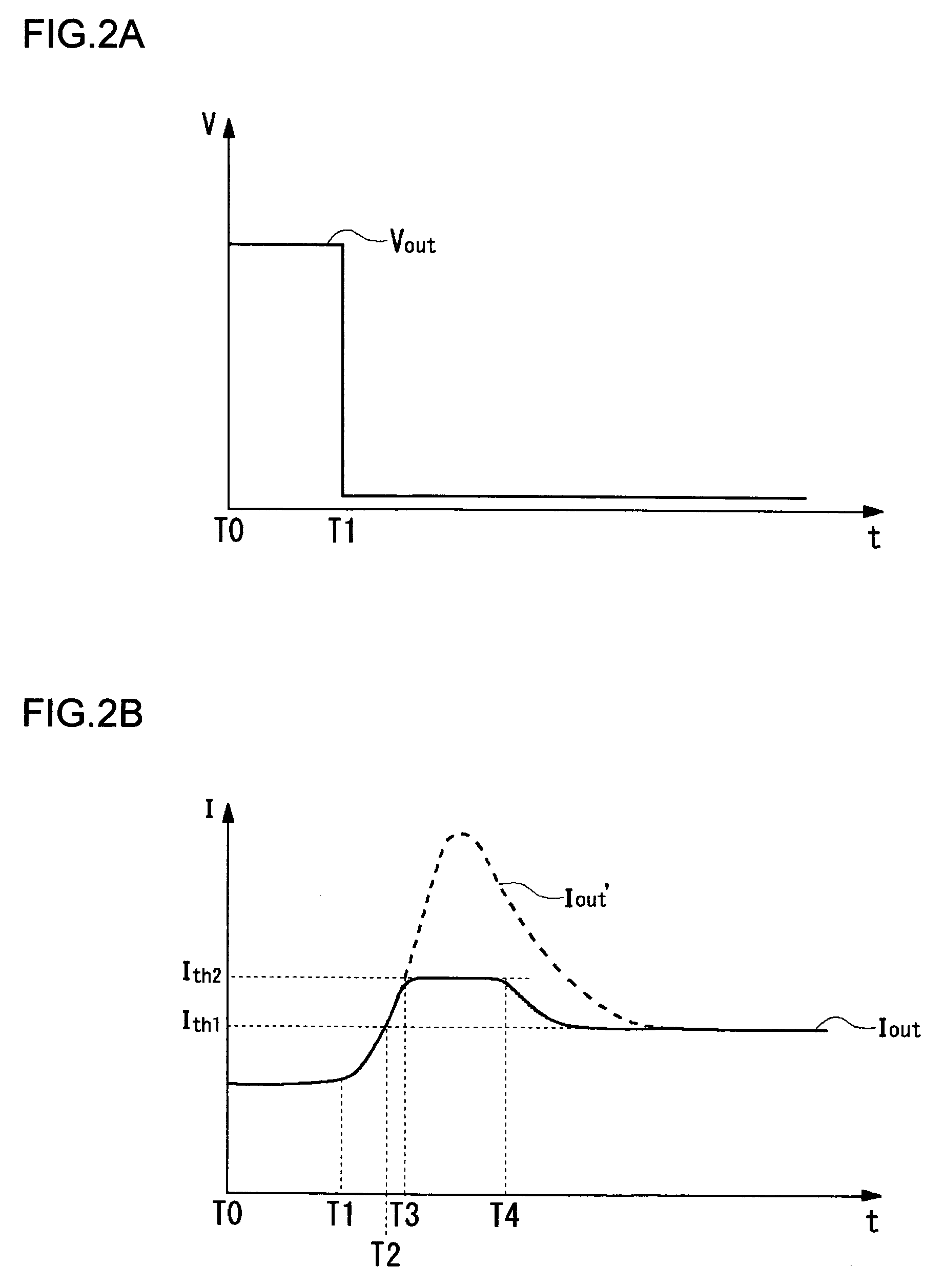Overcurrent protection circuit
a protection circuit and overcurrent technology, applied in the direction of electric variable regulation, process and machine control, instruments, etc., can solve the problems of easy oscillation of circuits, adverse effects on circuit stability, affecting reliability, etc., and achieve the effect of quick sensing an overcurrent and without loss of circuit stability
- Summary
- Abstract
- Description
- Claims
- Application Information
AI Technical Summary
Benefits of technology
Problems solved by technology
Method used
Image
Examples
Embodiment Construction
[0026]The invention will now be described based on preferred embodiments which do not intend to limit the scope of the present invention but exemplify the invention. All of the features and the combinations thereof described in the embodiment are not necessarily essential to the invention.
[0027]FIG. 1 is a circuit diagram showing a voltage generator circuit 100 according to an embodiment of the present invention. The voltage generator circuit 100 is a three-terminal voltage regulator for adjusting an output voltage to a constant value based on a reference voltage and includes an overcurrent protection circuit.
[0028]FIG. 4 is a block diagram showing the arrangement of an electronic apparatus 300 which incorporates the voltage generator circuit 100 of FIG. 1. For example, the electronic apparatus 300 may be a cellular phone, a PDA (Personal Digital Assistance), a digital still camera, or a CD player. The electronic apparatus 300 includes a battery 310, the voltage generator circuit 10...
PUM
 Login to View More
Login to View More Abstract
Description
Claims
Application Information
 Login to View More
Login to View More - R&D
- Intellectual Property
- Life Sciences
- Materials
- Tech Scout
- Unparalleled Data Quality
- Higher Quality Content
- 60% Fewer Hallucinations
Browse by: Latest US Patents, China's latest patents, Technical Efficacy Thesaurus, Application Domain, Technology Topic, Popular Technical Reports.
© 2025 PatSnap. All rights reserved.Legal|Privacy policy|Modern Slavery Act Transparency Statement|Sitemap|About US| Contact US: help@patsnap.com



